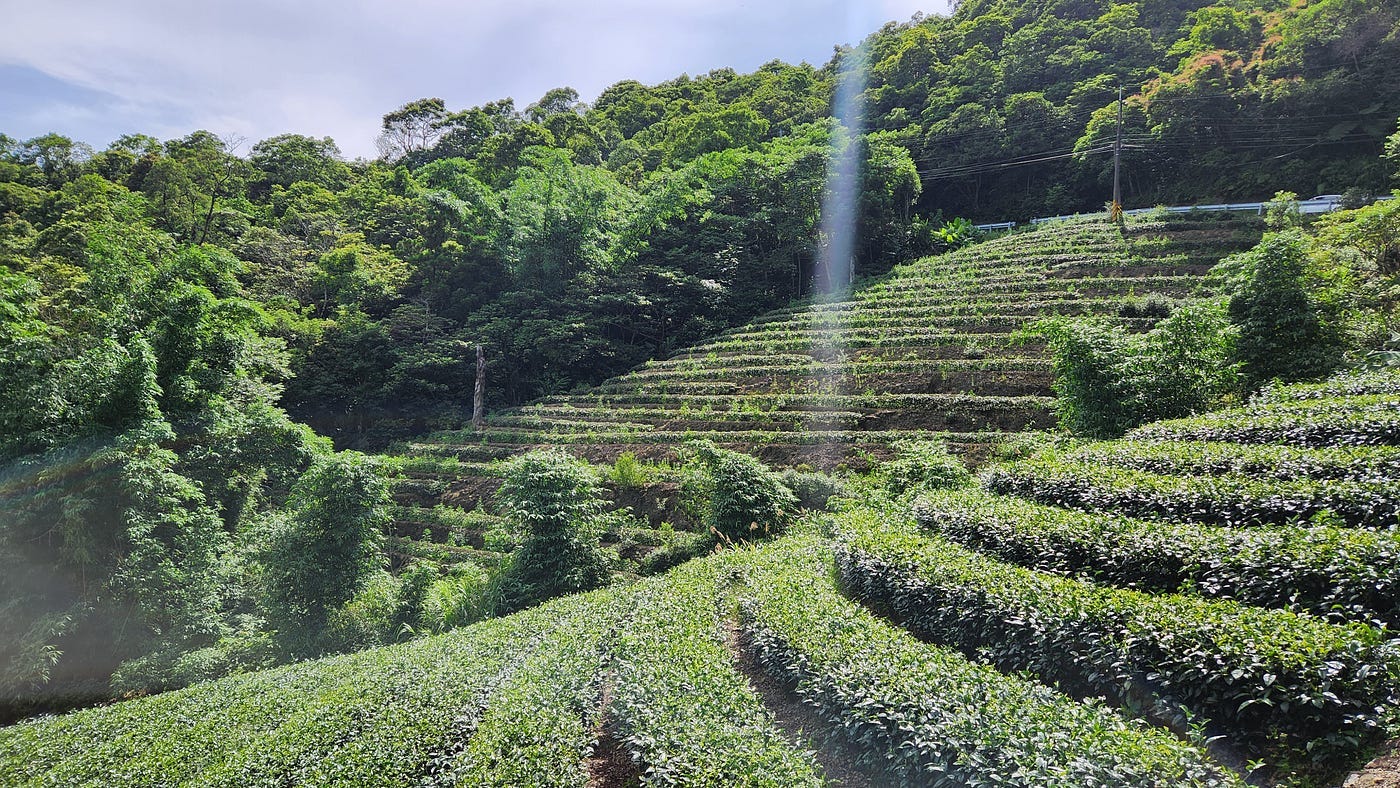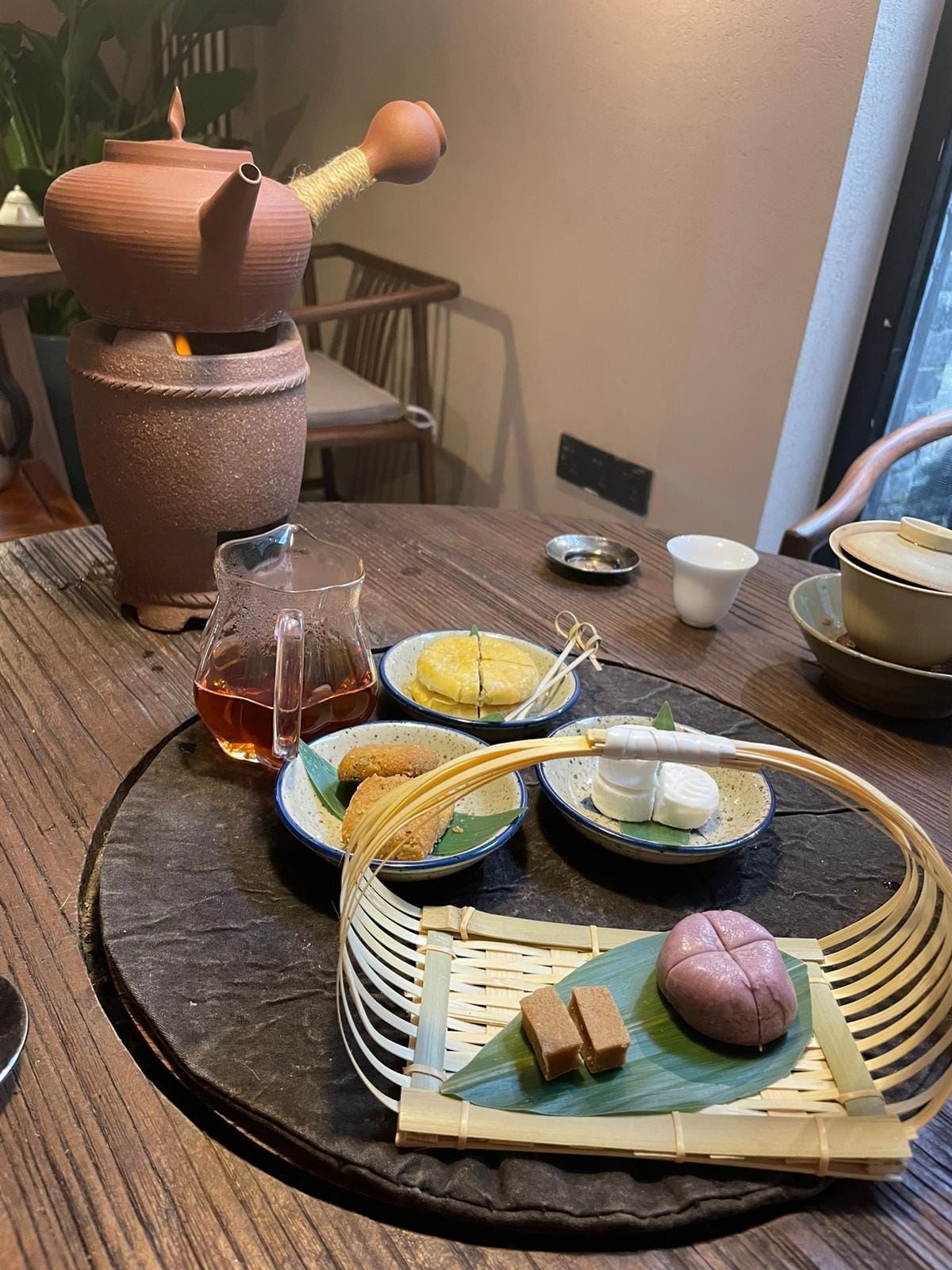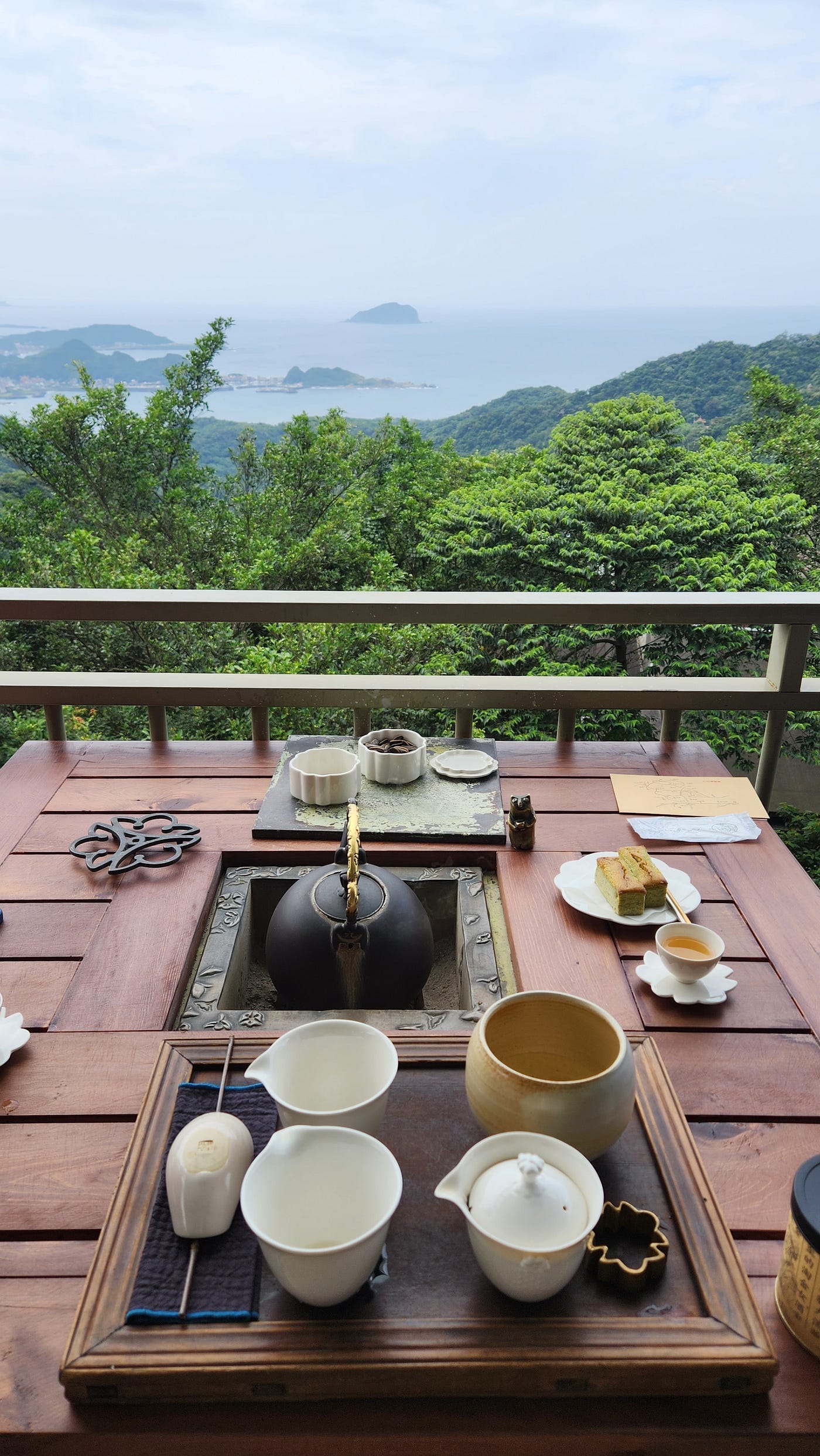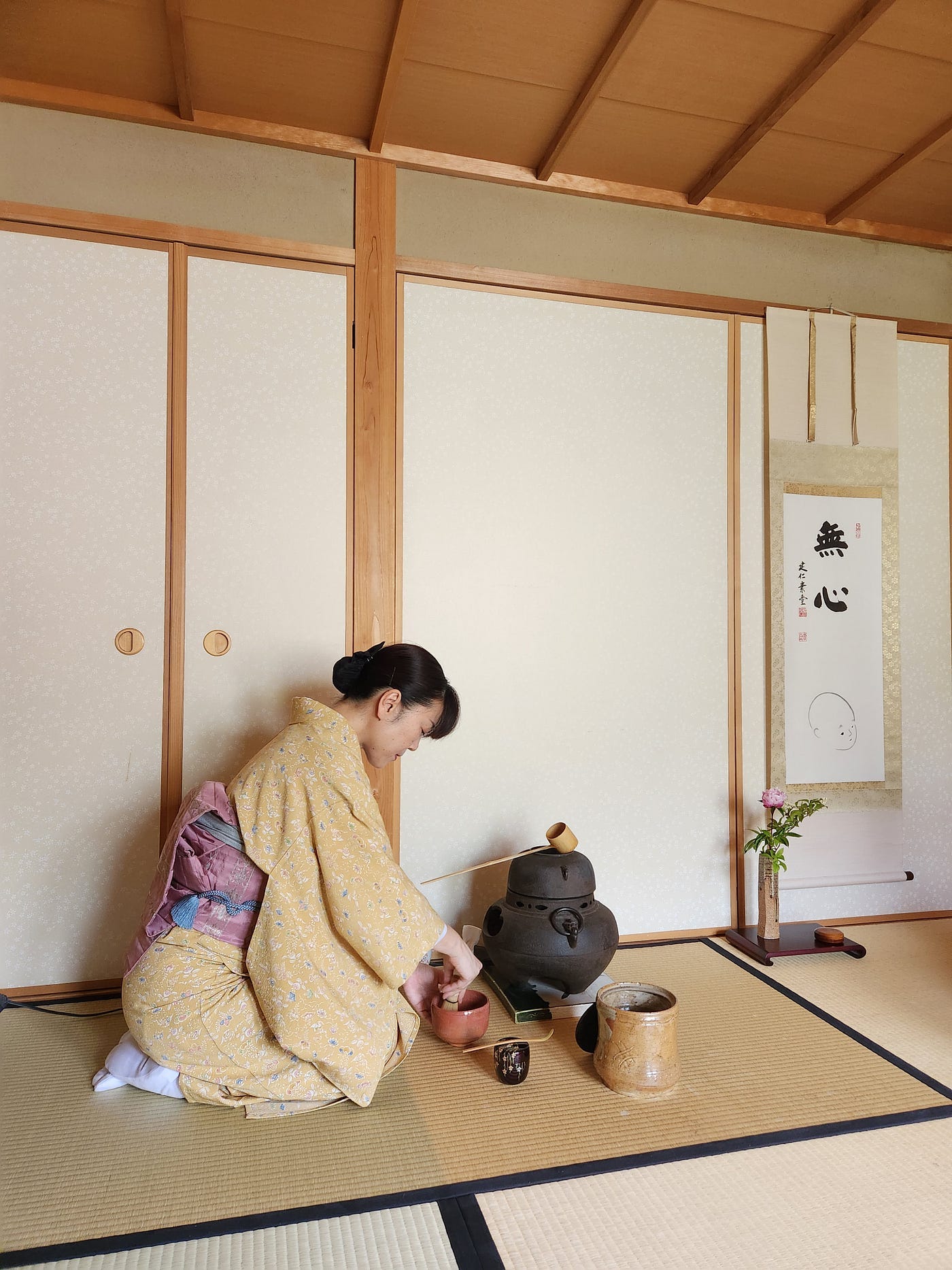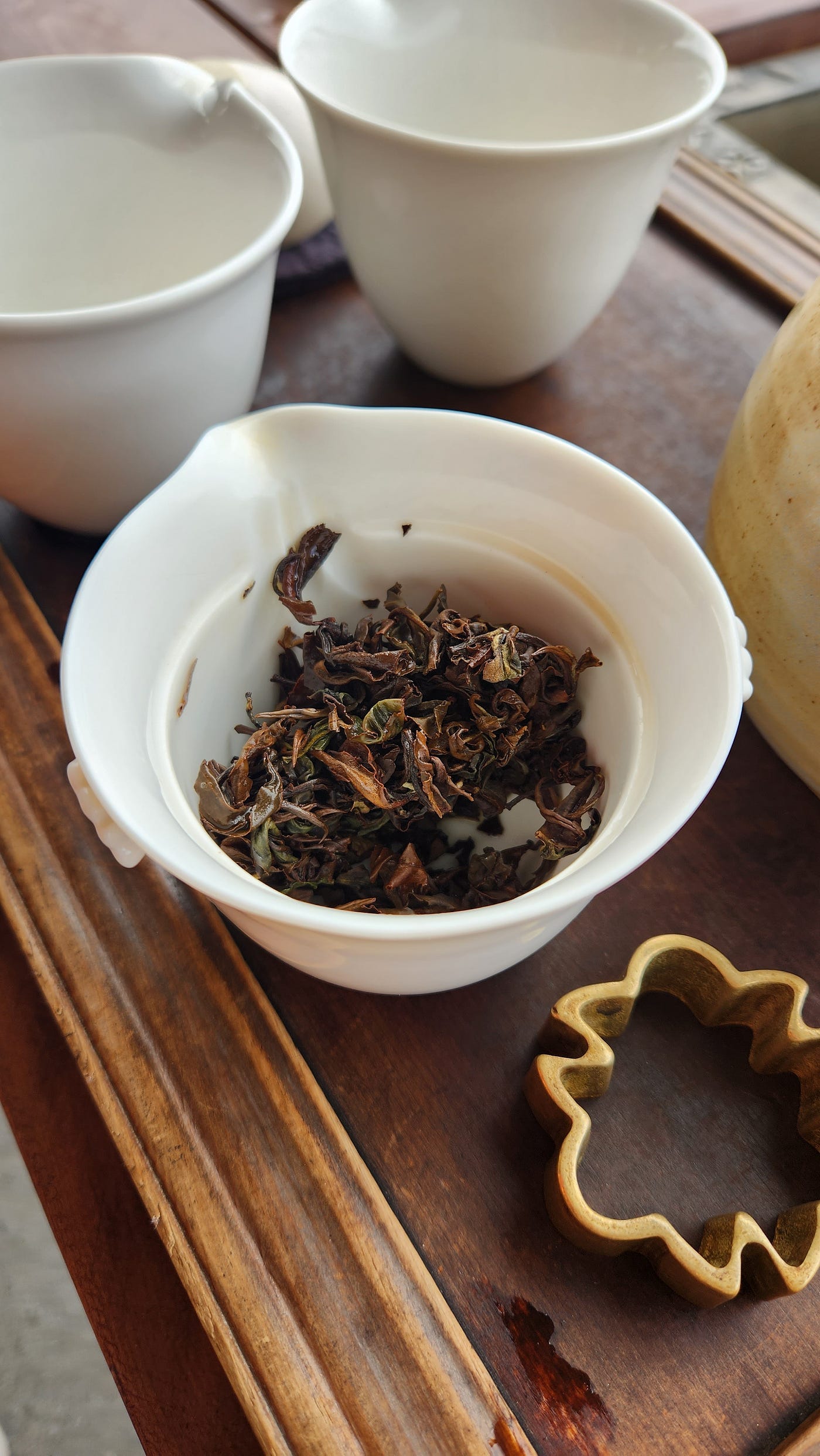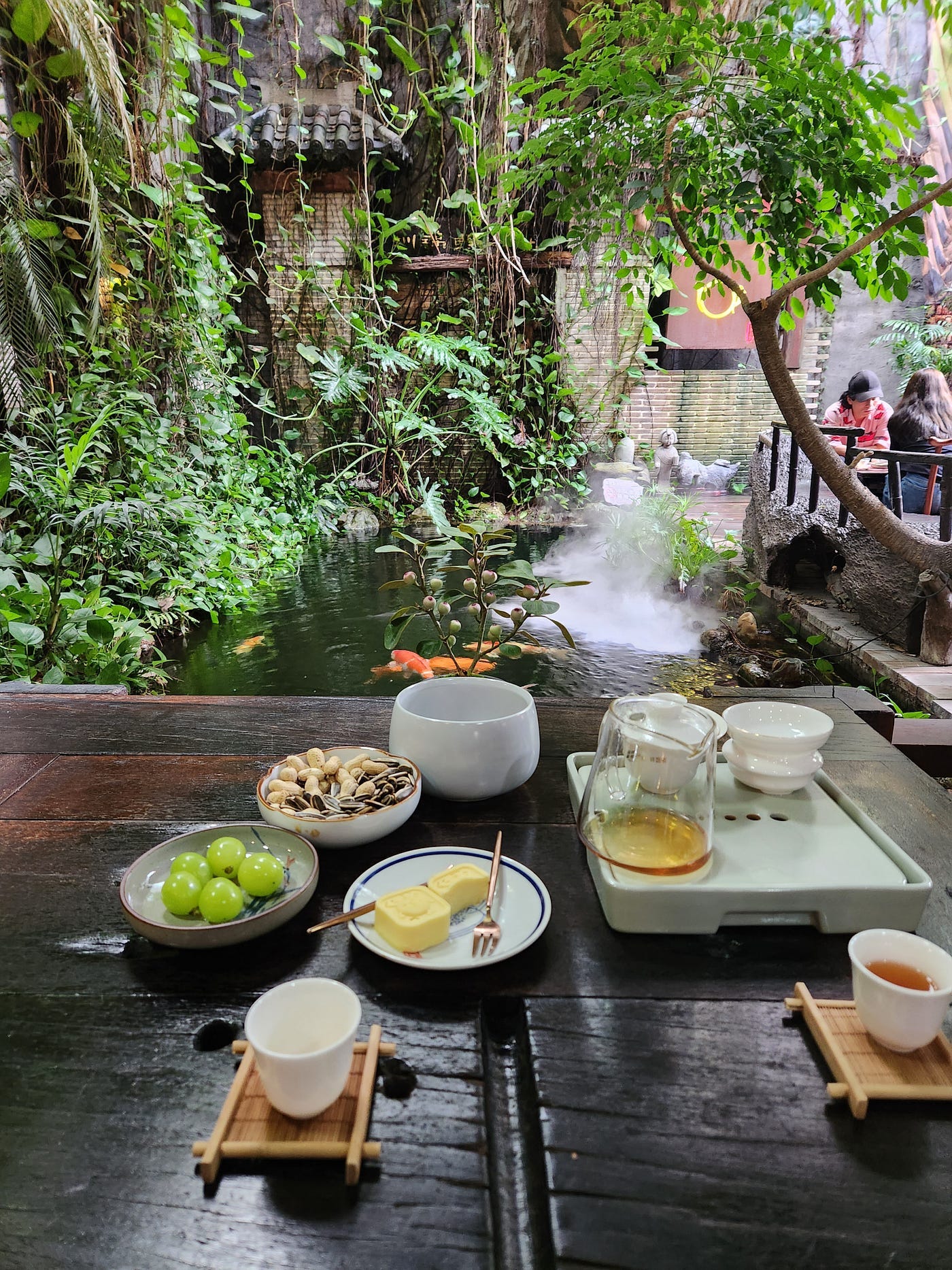When I was in school in England, my favourite go-to comfort tea was a cup of Earl Grey with a dash of milk without sugar.
My routine of tea drinking was not so much the actual tea drinking, but the waiting for the water to boil, mixing the tea and the milk, holding the hot tea mug between my cold hands, stuffing my nose in the tea mug for the hot steam, taking no more than five sips while snuggling up on the sofa with a blanket on my lap, leaving the tea cold, and pouring away half of the undrunk cup of cold tea.
That routine became my first unique tea ceremony.
Closer to My Roots
Then as I became older, I’ve grown to be closer to my cultural roots.
At university back home in Hong Kong, I started to do more “Chinese” activities. I drew Chinese painting, wrote Chinese calligraphy, sang Chinese opera, and read Chinese literature.
When I started working, while my friends were taking western wine courses, I learnt how to brew Chinese tea.
Since then, drinking and appreciating Chinese tea has become my favourite pastime.
Connecting Asia
When my friends come over to my place, I would offer to brew them Chinese tea. When I’m on the road, I would carry with me a mini tea set and make time for tea. When I travel in Asia, I would visit a tea house and learn how the Japanese perform their matcha ceremony, how the Taiwanese ferment and roast their tea, and how Shantou people brew their Kung Fu Oolong tea.
In Asia, the rules are similar. We all care very much about the water quality, the water temperature, the brewing time, the absolute concentration of brewing, pouring and serving tea. We might be talking to our guests, but in our head we are also counting that 15 seconds for the first brew, then 20 seconds for the second brew and testing the water temperature for every brew.
We all seem to share the same roots for tea drinking and treat it a serious matter. We all seem to drink tea for the same purposes — to nourish the self, to connect with our friends and to bond with our families.
Tea drinking is not an end, it’s a means.
Process of Meditation
Before I drink my tea, I would observe the clarity of the golden tea colour and the elasticity of the tea leaf on display. I would smell the flower and honey aroma and would feel the heat in my palm.
With every sip, I would taste the complexity of the single origin tea from that 200 years old tree, and would enjoy the aftertaste of the natural flavour of plum, mint and fire.
When I take that sip, I think about nothing but that cup of tea in front of me. It is like meditation except it works better than sitting and breathing meditation. It’s a state of calmness, clarity and joy.
The Meaning of Being Chinese
In China, we have 56 ethnic groups and a few hundred languages/dialects. If I just travel one hour north to some second or third-tier cities, I would find myself speaking very differently from the local people. We might be able to communicate in our national language Putonghua, but sometimes with the older generation we would only understand each other 20% to 50%.
But it would never be a problem, because we could communicate in tea. Every time I travelled to the Mainland China, friendly strangers would invite me to sit down and have a cup of tea. Sometimes in a forest, sometimes next to the road side, and sometimes in a shop.
They are always very proud of their local tea. They would pour me a cup of tea and wait nervously for my reaction to their local treasure. In return, I would always pay back with a reassuring smile and a nod of appreciation.
The meaning of tea drinking is deeply rooted in the Chinese culture — sharing tea is a gesture of extending love, trust and respect.
I used to wonder what kind of Chinese I am growing up in a colonial city, only to realise that there are many types of Chinese as it is a vast and diverse culture after all.
Turns out, I didn’t stop drinking Earl Grey tea for comfort on a gloomy day, but I also find calmness in drinking my Phoenix Oolong tea on a Saturday morning.
Submission by Candy Au



